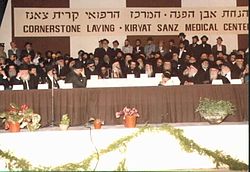
A Rebbe or Admor is the spiritual leader in the Hasidic movement, and the personalities of its dynasties. The titles of Rebbe and Admor, which used to be a general honor title even before the beginning of the movement, became, over time, almost exclusively identified with its Tzaddikim.

Netanya is a city in the Northern Central District of Israel, and is the capital of the surrounding Sharon plain. It is 30 km (18.6 mi) north of Tel Aviv, and 56 km (34.8 mi) south of Haifa, between Poleg stream and Wingate Institute in the south and the Avihayil stream in the north. Netanya was named in honor of Nathan Straus, a prominent Jewish American merchant and philanthropist in the early 20th century who was the co-owner of Macy's department store.

Bobov is a Hasidic community within Haredi Judaism, originating in Bobowa, Galicia, in southern Poland, and now headquartered in the neighborhood of Borough Park, in Brooklyn, New York.

Klausenburg, also known as Sanz-Klausenburg, is a Hasidic dynasty that originated in the Transylvanian city of Cluj-Napoca, today in Romania.
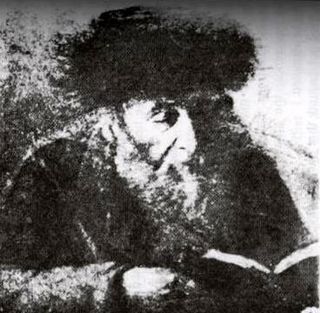
Sanz is a Hasidic dynasty originating in the city of Sanz in Galicia. The dynasty was founded by the rebbe Rabbi Chaim Halberstam (1793–1876) who was the rabbi of Nowy Sącz and the author of the work Divrei Chaim by which name he is known as well.
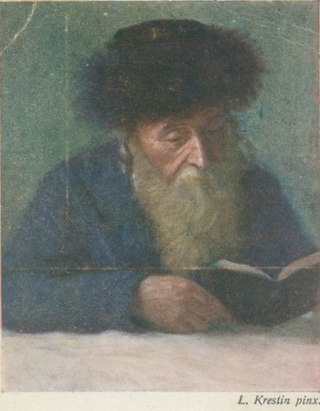
Chaim Halberstam of Sanz (1793–1876), known as the Divrei Chaim after the title of his writings, was the rabbi of Sanz, and the founding rebbe of the Sanz dynasty of hasidic Judaism.
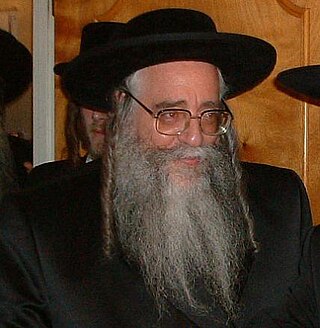
Zvi Elimelech Halberstam is the present Sanz Rebbe of Netanya, Israel. He is also known as the Sanzer Rebbe. He is the eldest son of Rabbi Yekusiel Yehudah Halberstam, the first Sanz-Klausenberger Rebbe, who in his will divided the leadership of the Klausenburger Hasidim between his two sons, Rabbi Zvi Elimelech and Rabbi Shmuel Dovid. He holds his court in the Kiryat Sanz, Netanya neighborhood founded by his father.

Yekusiel Yehudah Halberstam was a rebbe of the hasidic dynasty of Sanz-Klausenburg.
Halberstam is a Jewish surname, used by several branches of the Halberstadt family.

Rabbi Shmiel Dovid Halberstam, also known as the Sanz-Klausenberger Rebbe, is the younger son and one of the successors of Rabbi Yekusiel Yehudah Halberstam, the previous Klausenberger Rebbe. He resides in Brooklyn, New York.
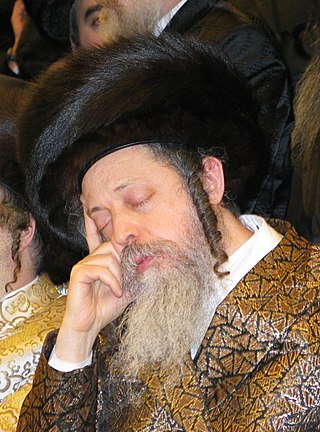
Shlomo Goldman, also known as the Sanz Zviller rebbe, was the Grand Rabbi of the Sanz-Klausenberger community in Union City, New Jersey, where he resided.

Rabbi Yekusiel Yehuda Teitelbaum (1808–1883), known as the Yetev Lev, was a Hasidic Rebbe in Austria-Hungary.
Rav is the Hebrew generic term for a person who teaches Torah or is a Jewish spiritual guide or a rabbi. For example, Pirkei Avot states (1:6) that:
(..) Joshua ben Perachiah says, "Set up a teacher [RaB] for yourself. And get yourself a friend [HaBeR]. And give everybody the benefit of the doubt."

Osher Zelig Weiss is a posek, rosh kollel (dean) of Machon Minchas Osher L’Torah V’Horaah and author of the Minchas Osher. He grew up in a Klausenberger hasidic family in Borough Park, Brooklyn.
Ephraim Fishel Hershkowitz, the Haleiner Rav, was an American Hasidic rabbi, the senior Klausenburger dayan in Williamsburg, Brooklyn, New York. He was a respected elder in the American Orthodox community.
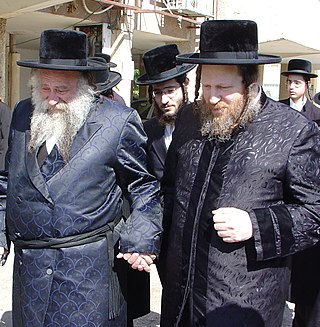
Mordechai Yissachar Ber Leifer was the third Rebbe of the Pittsburgh Hasidic dynasty. Born in the United States, he joined his father, Grand Rabbi Avraham Abba Leifer, in Ashdod, Israel, to serve as rosh yeshiva of a new Pittsburgher yeshiva in that city in 1981. After succeeding his father as Rebbe, he expanded the Hasidic presence in Ashdod with new schools and institutions, and increased the number of Pittsburgher families to nearly 200 in Ashdod. He also shepherded Pittsburgher Hasidim in Jerusalem, Bnei Brak, Beit Hilkia, New York City, and California. An accomplished Torah scholar and musical composer, he led the Hasidut for three decades until his death in 2020.
Kiryat Sanz is a Haredi Jewish neighborhood in Jerusalem. It is located in the northwestern part of Jerusalem.
Kiryat Sanz is a Haredi neighborhood located at the northwestern end of Netanya, Israel. Founded in 1956 by the previous Klausenburger Rebbe, Rabbi Yekusiel Yehudah Halberstam, who established his court here in 1960, Kiryat Sanz is the world center for Sanz-Klausenburg Hasidism. The Rebbe's son and successor, Rabbi Zvi Elimelech Halberstam, known as the Sanzer Rebbe, holds his court here.
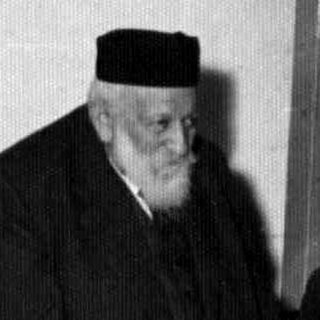
Moshe (Moritz) Wallach was a German Jewish physician and pioneering medical practitioner in Jerusalem. He was the founder of Shaarei Zedek Hospital on Jaffa Road, which he directed for 45 years. He introduced modern medicine to the impoverished and disease-plagued citizenry, accepting patients of all religions and offering free medical care to indigents. He was so closely identified with the hospital that it became known as "Wallach's Hospital". A strictly Torah-observant Jew, he was also an activist in the Agudath Israel Orthodox Jewish movement. He was buried in the small cemetery adjacent to the hospital.



